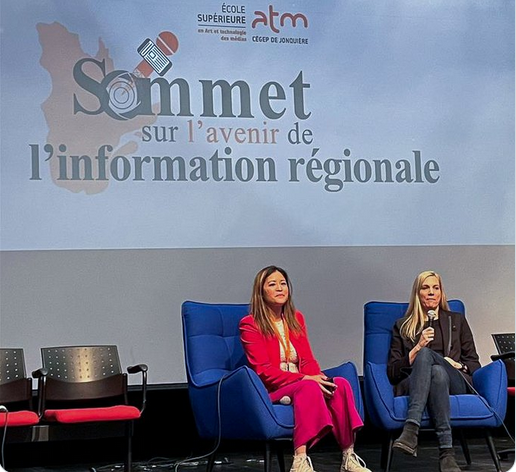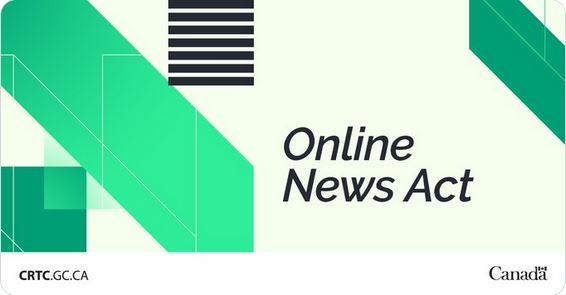Special Measures for Journalism
A Guide for Magazines
Last updated July 28/20 12:25 p.m.
– Notes by Allyson McGrane of Left Right Minds and Sylvia Skene, Executive Director of the Magazine Association of BC, with contributions by magazine publishers in BC and Alberta.
– Most notes from the July 14 workshop with David Harkness, Manager, Collective Initiatives and Business Innovation, Canada Periodical Fund (CPF), who is managing this component.
Please read the Application Guidelines carefully and fully before reading the below. You can also review the application form questions here (pdf) and here (MS Word) (thanks, Trudy Callaghan of Odvod Publishing, for passing this along) although you will have to fill the form out and submit online. NEW! Direct deposit form here.
BC magazines can also book a free 45-minute consultation with experienced grant writer Allyson McGrane to assist them with understanding the guidelines and applying for funding through this program.
You can also contact Canadian Heritage directly at 819-997-0055, or toll-free 1-866-811-0055 to talk to a program officer about this funding.
Deadline to apply has been extended to August 7, 2020 at 2 p.m. PT (5 p.m. ET).
Purpose
– Main message: Light Touch, Broad Reach
– CPF wants to help as many magazines (and community newspapers) as possible, so we suggest you interpret the eligibility criteria, read the guidelines and fill out the application with that in mind.
– Intended for those who don’t meet the CPF Aid to Publishers (ATP) funding threshold or eligibility, or who simply haven’t applied to ATP, as well as those not receiving funding from Canada Council for the Arts. Magazine publishers receiving other federal aid can still apply for this funding. (See below for details.)
– Why? the industry at large needs a lot of help. The Canadian government knows that there are issues for this industry – digital transition, loss of advertising revenues, etc. – that they’d like to help with through Canadian Heritage and CPF.
Funding
– Runs quite similarly to ATP, in terms of the pot being split proportionally by the percentage of editorial content spend by each magazine.
– Total budget is $45 million; maximum for a single magazine is $1.5 million.
– CPF originally estimated they would receive 2,500-3,500 applications, but it looks like the actual number will be far less, so we urge any BC publication that thinks they might be eligible to apply.
– This funding is a Canadian Heritage ministerial priority and CPF has about 30 people on the team to assist with processing applications and answering questions.
– They’re hoping to have the results out by September 30, and funding definitely distributed by the end of the year. Direct deposit form here.
– The funding received is to be spent from April 1, 2020 to March 31, 2021.
– Recipients can spend the funds on a variety of publishing activities, such as content creation, production, distribution, or business development.
This could include expenses associated with moving to digital, enhancing your website, marketing your magazine, printing costs—basically anything that helps you with your magazine.
– You can also pay for the 25% not covered by the CEWS 75% (and any other emergency funding) with this fund, then the total amount once each emergency funding program ends.
– The funding is non-taxable.
Fund Oversight
– CPF requires an attestation rather than detailed financial documents, much like ATP, but there will be spot audits and requests for info for risk mitigation.
– Stacking limit: no more than 75% of operating expenses can be paid for out of government funding and contributions from April 1, 2020 to March 31, 2021.
– If you are receiving other emergency funding (other than ATP or Canada Council for the Arts), you can still apply to cover those expenses not covered by the other funding as well as for any business development.
– What isn’t counted as part of the 75% stacking limit on federal aid:
- Loans. The emergency loans programs do have some amount that may be forgiven if a percentage is paid back by a certain date, but it’s after the March 31, 2021 end date for this funding.
- Rent assistance. If payment through the Canada Emergency Commercial Rent Assistance for small businesses is being paid to the landlord, we believe that you don’t need to include this in the 75%. However, you may want to check with them.
– The Refundable Labour Tax Credit (RLTC) and any unexpected overlaps in emergency funding such as an extension of the Canadian Emergency Wage Subsidy (CEWS) will be dealt with at tax time by the CRA.
– This will be a grant NOT a contribution agreement, in contrast to CPF Business Innovation fund, which has a contribution agreement with conditions. Therefore, no reporting is required but you might be audited.
– What is a “verifiable method” for auditing purposes? The gold standard is a circulation audit, but printing invoices to prove circulation are also acceptable. Obviously, the larger the magazine, the more likely CPF will ask for a formal circulation audit.
Eligibility
– Your magazine(s) can be free or subscription-based, online or in print.
– You can’t apply for any magazine(s) that have received Aid To Publishers or Canada Council for the Arts emergency funding this year.
– If you applied for ATP funding for the first time this year, contact your ATP officer before the August 7 deadline to find out whether you have been accepted. If you haven’t, you can then apply for this funding.
– Publish more than one periodical? If you get ATP for only some or one of them, then it’s OK to apply to Special Measures for Journalism for the others who aren’t receiving ATP but are eligible for this component.
– If you are receiving other federal financial aid or emergency funding, you can still apply for this fund. You just can’t use funding from more than one source for the same expenses, i.e. you can’t “double-dip.” (See also “Stacking limit” above.)
– “Is the publication edited, designed, assembled and published in Canada and has it completed at least one uninterrupted 12-month publishing cycle before the time of application?” This does NOT include printing. If your magazine is printed outside of Canada, that’s OK.
– It’s OK if a magazine has no advertising revenues but you MUST have spent on editorial content, over 50% original and Canadian, etc. This includes photos, videos, design etc.
– See the guidelines for more details on eligibility.
Applying
– After reading the application guidelines, you can click on the application form link under “How To Apply.”
– Say NO when they ask you if you’re receiving aid from other federal sources to cover the same costs, unless you calculate that your magazine will receive over the 75% stacking limit if you receive this funding as well as other aid, which is unlikely. Remember, you can use this funding for business development, not just to cover losses.
– Say YES when they ask you if your publication is in need of funding to ensure a continuity of operations and to safeguard jobs, unless you’re independently wealthy and bankrolling your magazine out of your own pocket.
– If primarily print, apply for the print stream.
– If primarily digital, apply for the digital stream. (You can have print issues; they just need to be a smaller part of your magazine than digital.)
– It’s OK if your magazine was print and went to digital; apply to the digital stream. You can still use your previous fiscal year’s information about your magazine, even if it was in print form at that time.
– For revenues and expenses, plug in the last financial statement’s income and expenses related to publishing your magazine that ends on a date within the period of April 1, 2019 and March 31, 2020. For example:
- If your year-end is January 31, 2020, you fill in all publishing income and expenses from that fiscal year.
- If your year-end is April 30, 2020, that’s beyond the March 31, 2020 period, so you need to use the previous year’s financial statements ending April 30, 2019 when filling out the income and expenses.
– Revenues are split up as follows, as applicable:
- Sales of periodicals
- Sales of other goods and services
- Grants, subsidies, donations and fundraising
- Royalties, rights, licencing and franchise fees
- Other revenues
- Total (automatically generated. This should match your financial statement revenues.)
– Expenses, as applicable:
- Salaries and wages
- Subcontract expenses
- Cost of goods sold
- Advertising, marketing and promotion
- Delivery, warehousing, postage and courier
- Other expenses
- Total Expenses (as above)
We realize some of these may be a bit difficult to pull out of your accounts but do your best.
— You can include in-kind in both the income and expenses and content creation portions of the application. The trick is that you need to have included them in your last financial statements. If you didn’t, now’s the time to start in case this funding continues next year.
– Canadian editorial content expenses = costs related to the creation of content versus production (e.g. printing, distribution) which are physical aspects.
From the application: “expenses incurred to create Canadian original editorial content in this periodical as well as associated digital content, if applicable. Canadian original editorial content consists of text, images, photographs, graphics, illustrations and video content. Please exclude all non-salary expenses and salary expenses incurred for non-editorial activities (e.g. producing advertising or sponsored content; performing management, administrative, accounting; etc.).”
– You can’t include shareholder or owner dividends, or non-editorial staff or work in the content creation expenses. Otherwise, the content creation portion is very flexible and includes expenses for part- and full-time employees, contractors (including contributors) and interns in the following areas:
- Editors
- Writers
- Translators
- Proof-readers
- Photographers
- Designers
- Illustrators
- Videographers
- Journalists
See definitions below.
– If you’re a small publication and you or the people you work with do both editorial and non-editorial work, it’s just fine to calculate what percentage of these salaries cover editorial content creation and include that in the editorial content expenses for your last fiscal.
– If you are a sole proprietor, you need to figure out a way to prove you have signing authority, whether it be by charter, bylaws, proof of ownership, or whatever.
Definitions – Editorial Expenditures
Salaries/costs related to the generation of editorial pages and the activities leading to the production of Canadian editorial content, (for both print and digital content) include:
Editor(s)
- The person responsible for implementing the editorial policy and is responsible for the editorial content of the publication
Writer(s)
- A person who composes thoughts and presents information in literary forms as their occupation or profession
Translator(s)
- An employee or third party services whose specific job requires changing words in written form for one language into a different language.
- Translated editorial content by a citizen or a permanent resident of Canada within the meaning of this Act will be considered Canadian editorial content if the editorial content is translated into one of the two official languages. Translation does not modify the nature of the editorial content.
Proof-reader(s)
- The function of reading text after typesetting but before printing. A proof-reader compares the compositor’s typeset pages to the original manuscript
Photographer(s)
- The function of producing photographs as stand-alone stories or associated with a theme or story for the purpose of publication in a print or digital publication
Designer(s)
- Costs associated with the creative selection of graphic elements and correlating the selected text and graphics into a visually pleasing page format ready for production.
Illustrator(s)
- A paid person that creates a conceptualizes drawing from the theme of the copy and designs images consistent with the style or format of the publication
Videographer(s)
- The function of producing videos for publication on an associated digital platform or a digital-only magazine or digital-only community newspaper.
- Note that “associated” means this can include print magazines who also have a digital platform.
Journalist(s)
- A paid employee who researches and/or investigates events and produces articles which include facts, descriptions or events explanations of interest to the reader.
Freelance editorial work, e.g. contractors
- Costs associated with a Canadian or permanent resident that is not employed by the publishing firm but provide editorial services to the publication
Canadian content rights purchased
- Costs associated with the acquisition of Canadian editorial materials from a Canadian or permanent resident who is not a salaried employee
Third-party financial accounting
- Accounting services provided by a company or individual who does not have a direct connection with the legal transactions of the business which involves recording, reporting, and analyzing financial transactions of the business
- Considered a valid editorial expenditure only for services specific to the Financial verification requirements detailed in the guidelines.
Not included this year under Canadian editorial content expenses:
Publisher
- A person that prepares and issues journals, magazines and community newspapers in traditional and digital formats for sale to the public which can include their own work and from other authors’.
Currently, this is not included under content expenses, BUT if you do tasks in one of the areas above, you can include that portion of your salary or contract fee under that position. Examples:
- If you do your magazine’s layout, you can include that portion under Designer(s) in content expenses.
- If you edit articles, or if you do a bit of everything, you can include that portion under Editor(s) in content expenses.
Research
- The systematic approach to studying materials and to ascertain details from sources in order to determine facts and/or reach conclusions.










